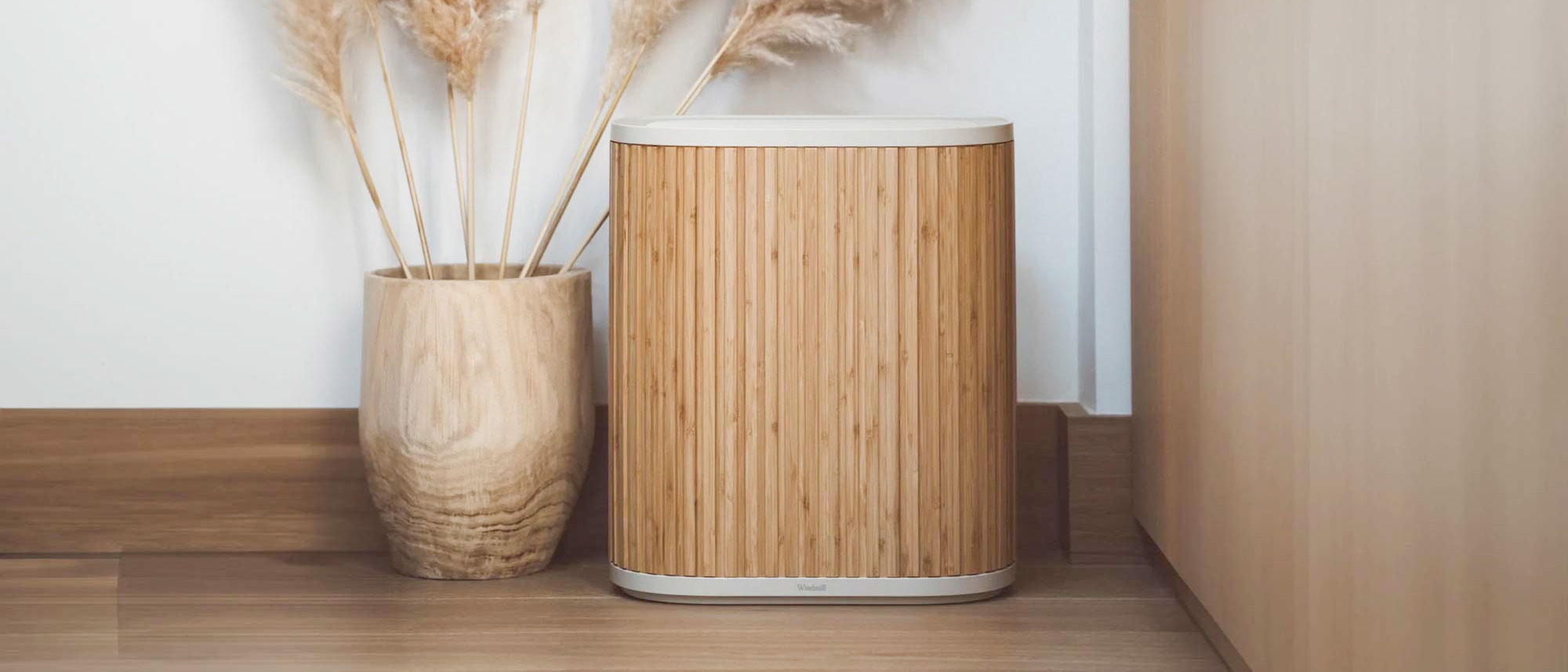Tom's Guide Verdict
The Windmill Air Purifier is a small yet impressive air purifier. It successfully cleans the air, is user-friendly, has a quiet operation, and is one of the best looking air purifiers I've ever tested.
Pros
- +
Large room air filter
- +
Quiet
- +
Bamboo design option
- +
Lifetime warranty
- +
Two prong plug
Cons
- -
No electrostatic filtration
- -
Lacks germ killing
Why you can trust Tom's Guide
Size: 18 x 16 x 9 inches
Weight: 21 pounds
CADR rating: 286 cubic feet per minute (smoke), 284 CFM (dust), 343 CFM (pollen)
Recommended room size: 442 square feet (four exchanges per hour)
Estimated annual power cost: $20.50/yr
If you’re after the best air purifier that is attractive and won't look like an eyesore, look no further than Windmill's Air Purifier.
The Windmill Air Purifier is small and oval shaped; it's also light years ahead of the competition’s rectangular steel boxes. It's available in white, blue or finished bamboo to suit your interior style.
Although the air purifier’s three-stage cleaning process leaves out an electrostatic filter and germ killing, this should still be adequate for a large room. Plus, its automatic mode and excellent phone app allow lots of customization and remote control.
While it looks great and has an unrivaled lifetime warranty, the Windmill Air Purifier is also among the least expensive I've tested (although the bamboo version costs $100 more).
Read our Windmill Air Purifier review to see if it performs just as well as it looks.
Windmill Air Purifier review: Price and availability
The Windmill Air Purifier is now available for $299 on Amazon, and $369 on The Windmill website.
At such an affordable price, the Windmill Air Purifier can make sure the air is clean in a large room without breaking the bank, although that’s for the white or blue painted models. The more sophisticated bamboo version costs $469.
The Windmill company frequently offers an extra set of HEPA filters with the order, an $80 value. If you sign up for auto-delivery, they cost $60 each.
Unlike others that stand by their air purifiers for a year or two, the Windmill covers its Air Purifier for life. That said, you will need to keep buying HEPA filters between every six months to a year.
Windmill also sells window air conditioners that range from 6,000 to 12,000 BTUs of cooling power for between $319 and $579.
Windmill Air Purifier review: Design
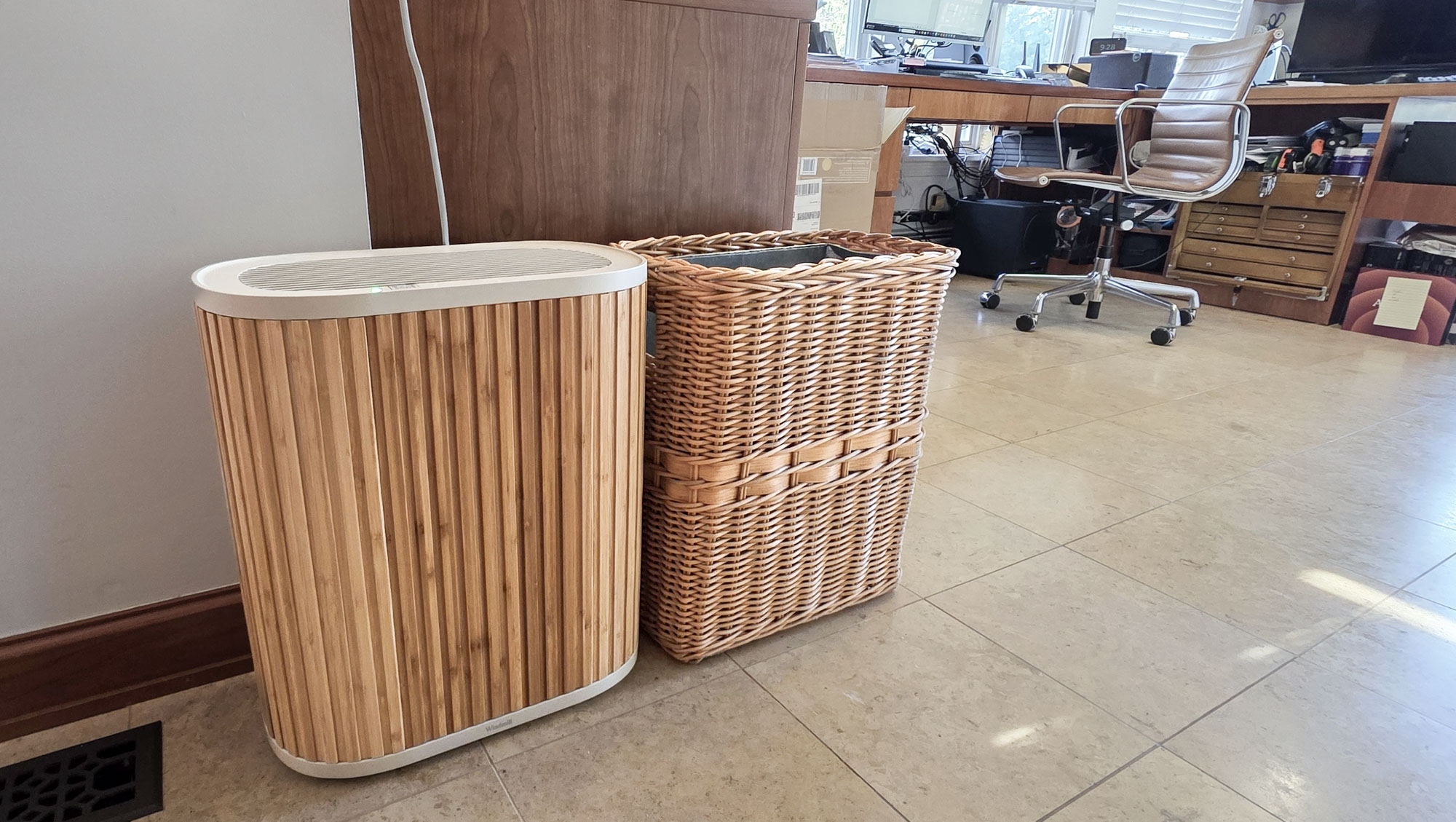
Design-wise, the Windmill Air Purifier is a squat, oval tower as opposed to a generic-looking rectangular sheet metal box.
In fact, it's one of the most attractive room air cleaners on the market right now.
Designed in New York City and manufactured in China, the device measures 18.6 x 16.1 x 8.9 inches and can be ordered in blue or white for $369.
I choose the $469 bamboo version that fit perfectly in my office, particularly next to my rattan garbage can. Although it weighs 21 pounds, the Windmill Air Purifier lacks wheels or a handle to help with moving it.
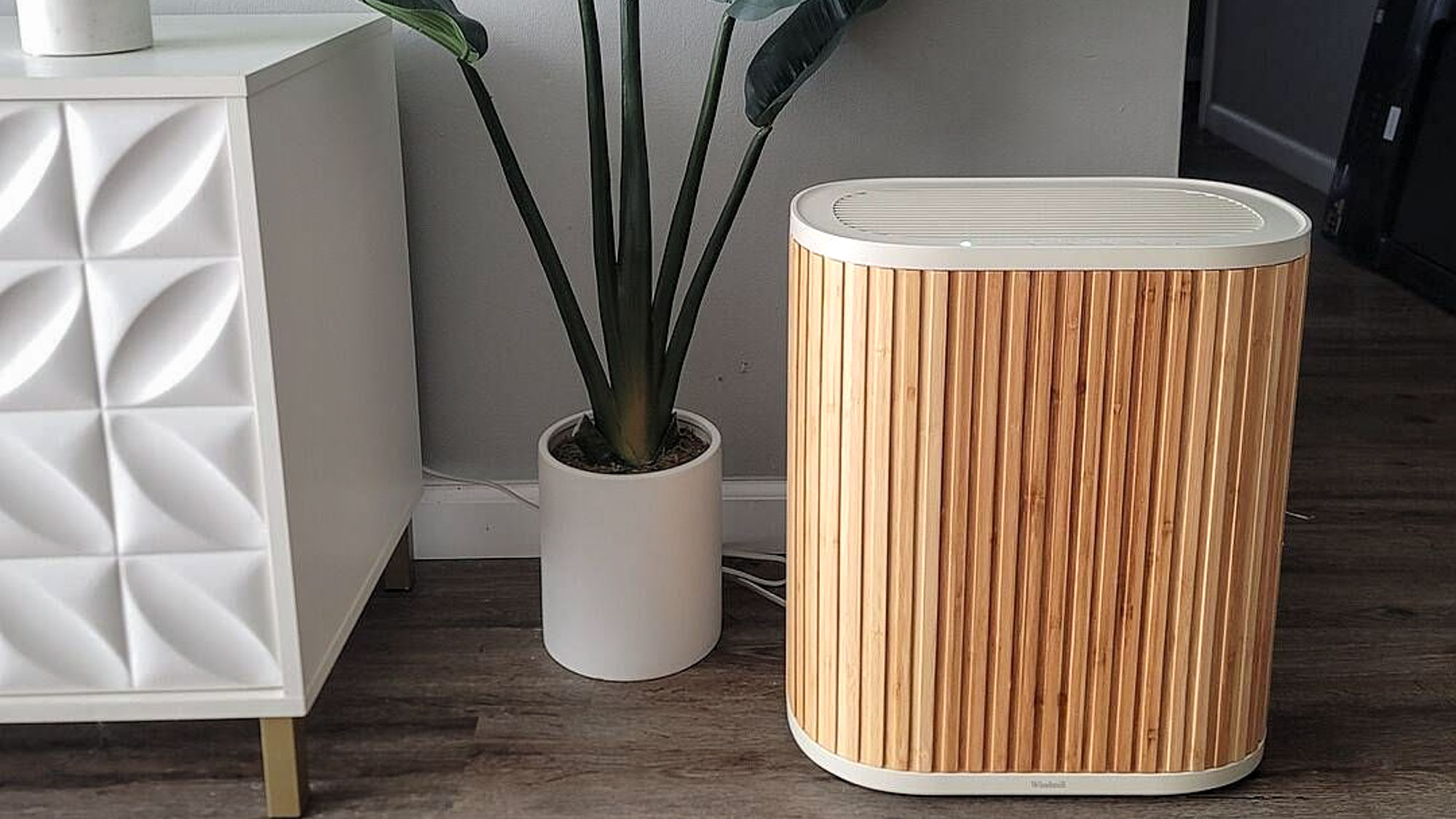
The prominent vertical slats are a nice design touch. And on the side, a small square opening allows room air to flow to the filter’s laser particulate measurement apparatus.
This allows the Windmill Air Purifier to keep tabs on the air quality on a second-by-second basis, to determine how hard the fan and filter have to work. Its Eco Smart mode automatically reacts to a rise in particulates in the air.
On the other hand, the Windmill Air Purifier lacks a Volatile Organic Compound (VOC) sensor or the ability to use external sensors as is the case with Airthings’ Renew.
Windmill Air Purifier review: Ease of use

Setting up the Windmill Air Purifier was easy and quick, taking all of five minutes. After opening the box, I was confronted by a second box with a handle and instructions for opening it. Inside the air purifier was ready to go.
A QR code delivers set up instructions and the Air Purifier connected to my office’s Wi-Fi network on the first try.
One thing to note is the Windmill Air Purifier has a 5 foot, 11 inch, two prong cord that is suitable for most homes, but it lacks the internal cable spool found on the Molekule Air Pro to hide extra wiring.
Once set up, the Windmill Air Purifier is stable but lacks a tip-over shutoff switch; it does have a child lock, though.
The rudimentary control panel is dominated by an LED that shows the air’s status by color. While green corresponds to clean air at between 0 and 50 micrograms of up to 2.5 micron sized particles per cubic meter (µg/m3), yellow means the air is acceptable at between 51 and 100 µg/m3.
If the air purifier lights up orange, the air is unhealthy for those with asthma or other lung problems at 101 to 150 µg/m3 and red means it’s a good idea to leave the room at over 151 µg/m3.
There are also lights for a Wi-Fi connection and when the filter needs changing.
What's more, the Windmill Air Purifier has three buttons to turn the unit on or off, change its fan speed and set it to the quieter sleep mode.
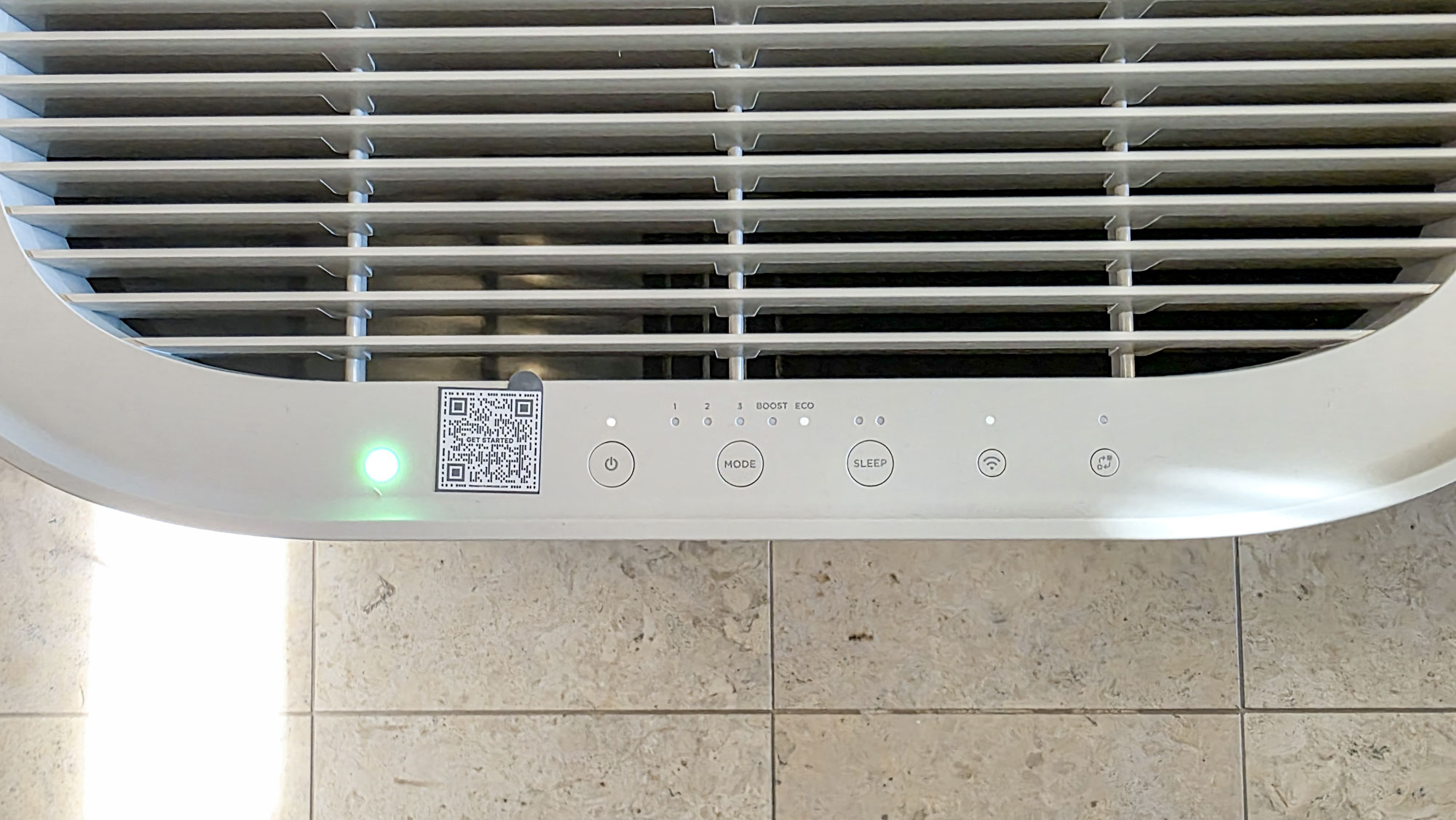
Despite the absence of a remote control, the air filter’s app has no shortage of adjustments. There are versions for iOS and Android systems, although its startup is slowed by a series of app questions about you and your lifestyle.
Once running, there are controls for turning the air cleaner on and off, seeing the current air quality and the HEPA filter’s lifespan. Its other controls mirror the control panel with fan speed, automatic Eco setting and using its sleep mode.
Dig a little deeper and the app’s Settings let me have the LEDs fade out after three seconds so as not to disturb a child’s sleep — it’s easy to silence the unit’s occasional beeping.
On top of integrating with Alexa and Google Home Assistant, the Windmill Air Purifier has its own automation options. They range from time scheduling and setting sunset or sunrise as triggers to those based on air quality readings.
Windmill Air Purifier review: Performance
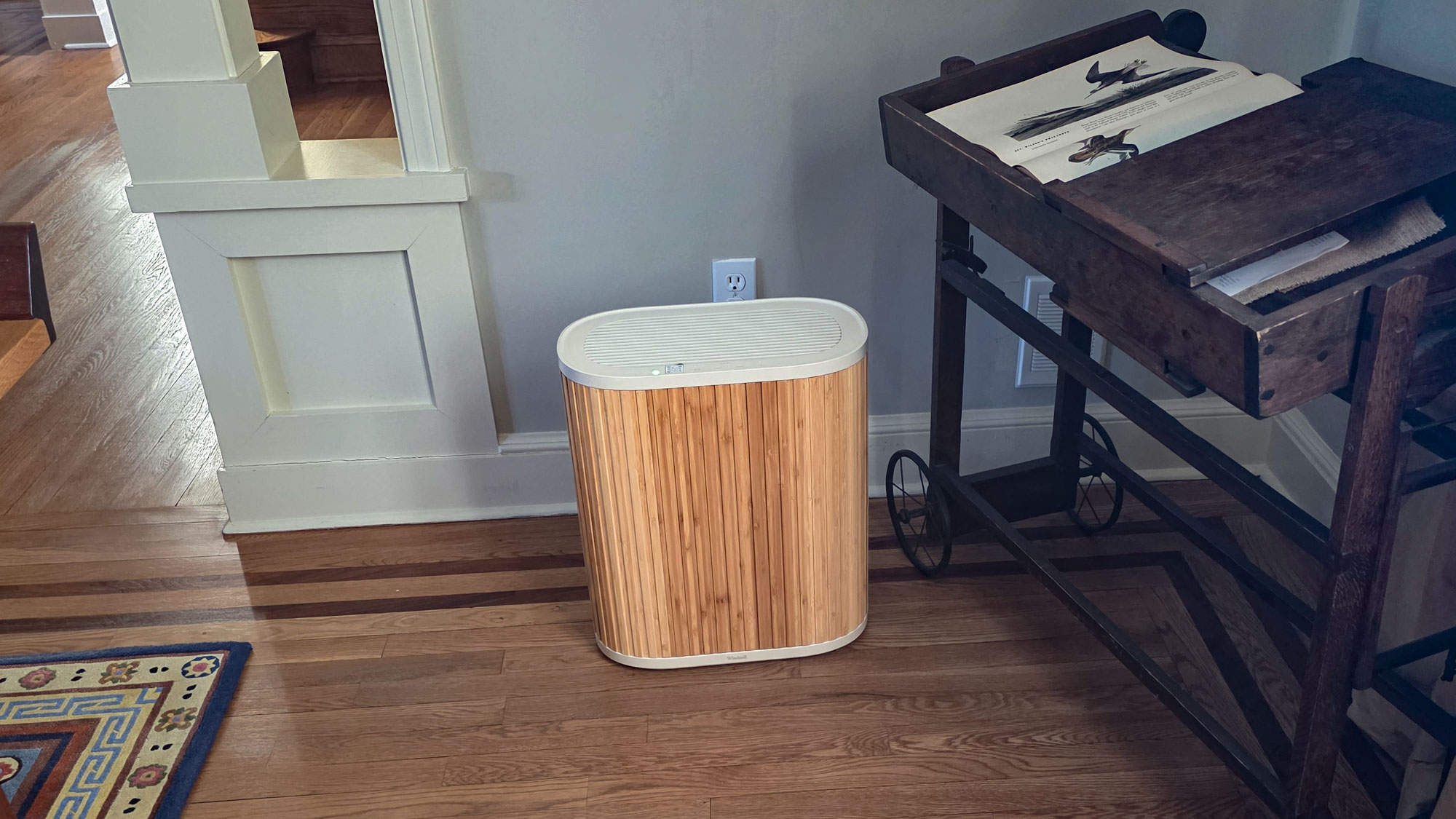
I set up the Windmill Air Purifier in my 25 x 12 foot office, and after going through the modes, I settled on the Eco setting for automatic operation.
The automatic setting has a low baseline fan speed and allows the Air Purifier to react to particulates in the air. The air cleaner lacks a VOC sensor, though.
Showing its range of operations, the air purifier’s Low, Medium, High and Boost modes yielded air speeds (measured 12-inches above its exhaust vent) of 0.8 miles per hour, 2.4 mph, 5.3 mph and 6.5 mph.
That’s the fastest air speed I’ve seen in recent tests although the Blueair’s CP7i’s dual 3.3 mph exhaust vents come close in overall air flow.
On the other hand, in Eco Smart mode, the purifier can be slow to react to changes in air quality. After I lit my funky smelling candle, the unit took nearly 30 seconds for the fan speed to increase enough to make a difference. I snuffed the candle out and 15 minutes later, the readings were back to the baseline.
The same was true when I sprayed five squirts of room scent and later with 10 puffs of fine pastry flour. In each test, the filter briefly showed a yellow light and then returned to green status.
Later when I was cooking bacon in a kitchen across the house, the light changed to orange and then settled down to yellow and returned to green before I was done cooking.
In its lowest fan setting, the purifier is extremely quiet at 38.4 dBA in a room that registered a background of 37.7dBA. The more boisterous settings raised the noise level to 44.7-, 59.1- and a peak of 66.0dBA in Boost mode. This is at the high end but well below the Air Pro’s 70.1 dBA.
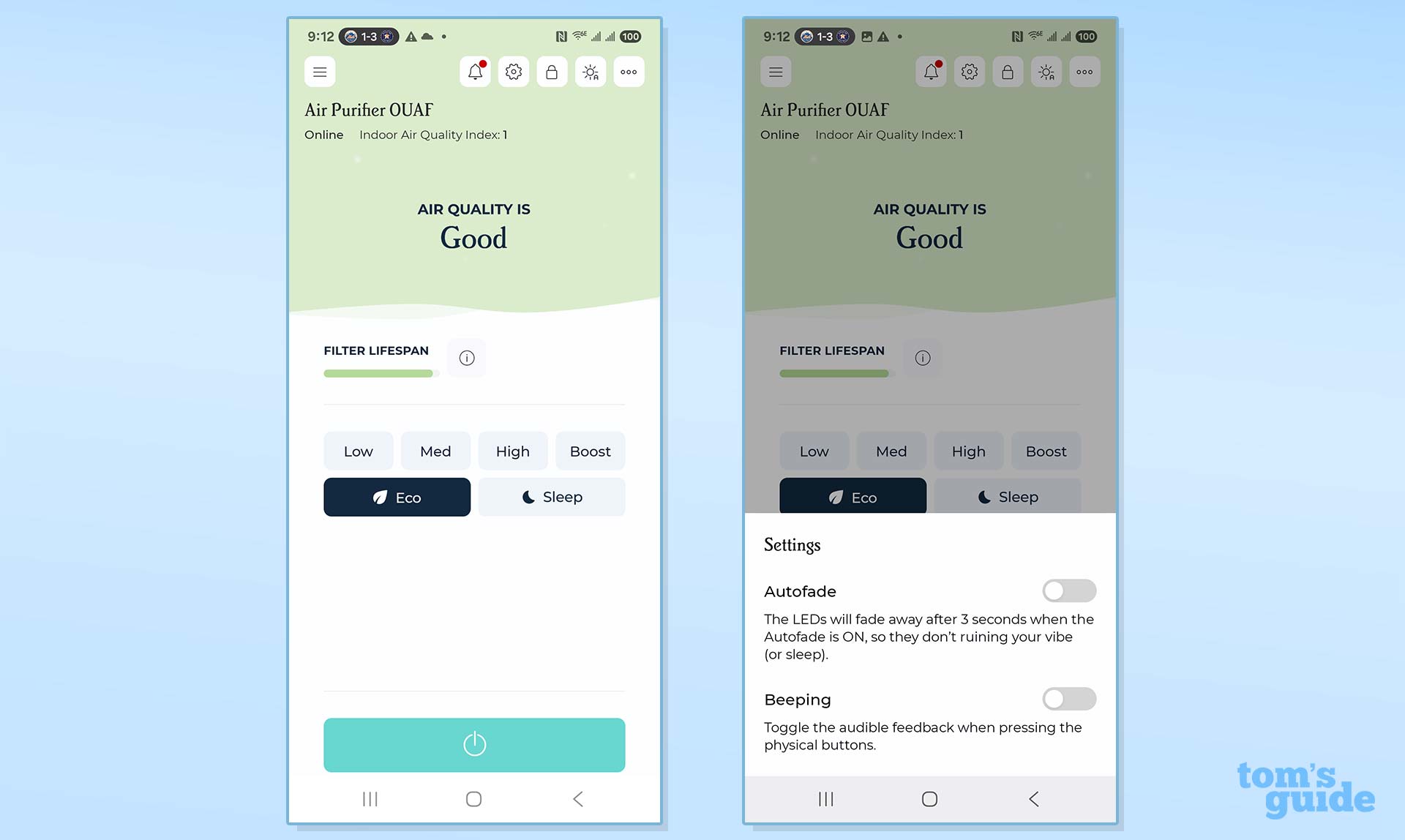
That said, its power use was large, ranging from 3.9 watts in low mode to a peak of 68.6 watts in Boost mode.
Over a full day of normal use, if you pay the national average of 16 cents per kilowatt hour, expect that the air purifier will cost about $20.50 a year to operate. This is between the economical BioGS’s $6.58 and theAir Pro’s high of $38.40.
If you are energy conscious though, the Blueair Blue Pure 211+ Auto gave us a lower energy usage reading.
There’s little maintenance required to keep the air flowing, but you will need to vacuum or shake clean the prefilter monthly and replace the pair of HEPA filter once or twice a year.
The filter elements cost a reasonable $60 and after three weeks of continuous use, it had 93% of its lifespan remaining; it helpfully shows 171 days until a replacement will be necessary. You can sign up for automatic shipping.
Windmill Air Purifier review: Verdict
If you want style, price and function, the Windmill Air Purifier is a great choice.
It combines a powerful fan with fast air speeds and reasonably quiet operations and a reasonable energy budget.
Those who bought the Windmill Air Purifier rated it highly in online reviews. They liked its combination of style, quiet operation, ease of use and effectiveness. Its slowness in responding in auto mode was a problem that some noted.
While it lacks germ-killing and electrostatic filtering, this is the air cleaner to get if you don’t want to hide it. Windmill's design aesthetic is certainly appealing and light years ahead of the boring, square boxes this air purifier is up against.
It may not be the fastest at reacting to changes in air quality, but the combination of a lifetime warranty and 'old-house friendly', two-prong plug means that the Windmill Air Purifier should easily fit in at most homes to help improve air quality and look good while doing it.
Brian Nadel is a freelance writer and editor who specializes in technology reporting and reviewing. He works out of the suburban New York City area and has covered topics from nuclear power plants and Wi-Fi routers to cars and tablets. The former editor-in-chief of Mobile Computing and Communications, Nadel is the recipient of the TransPacific Writing Award.
You must confirm your public display name before commenting
Please logout and then login again, you will then be prompted to enter your display name.
